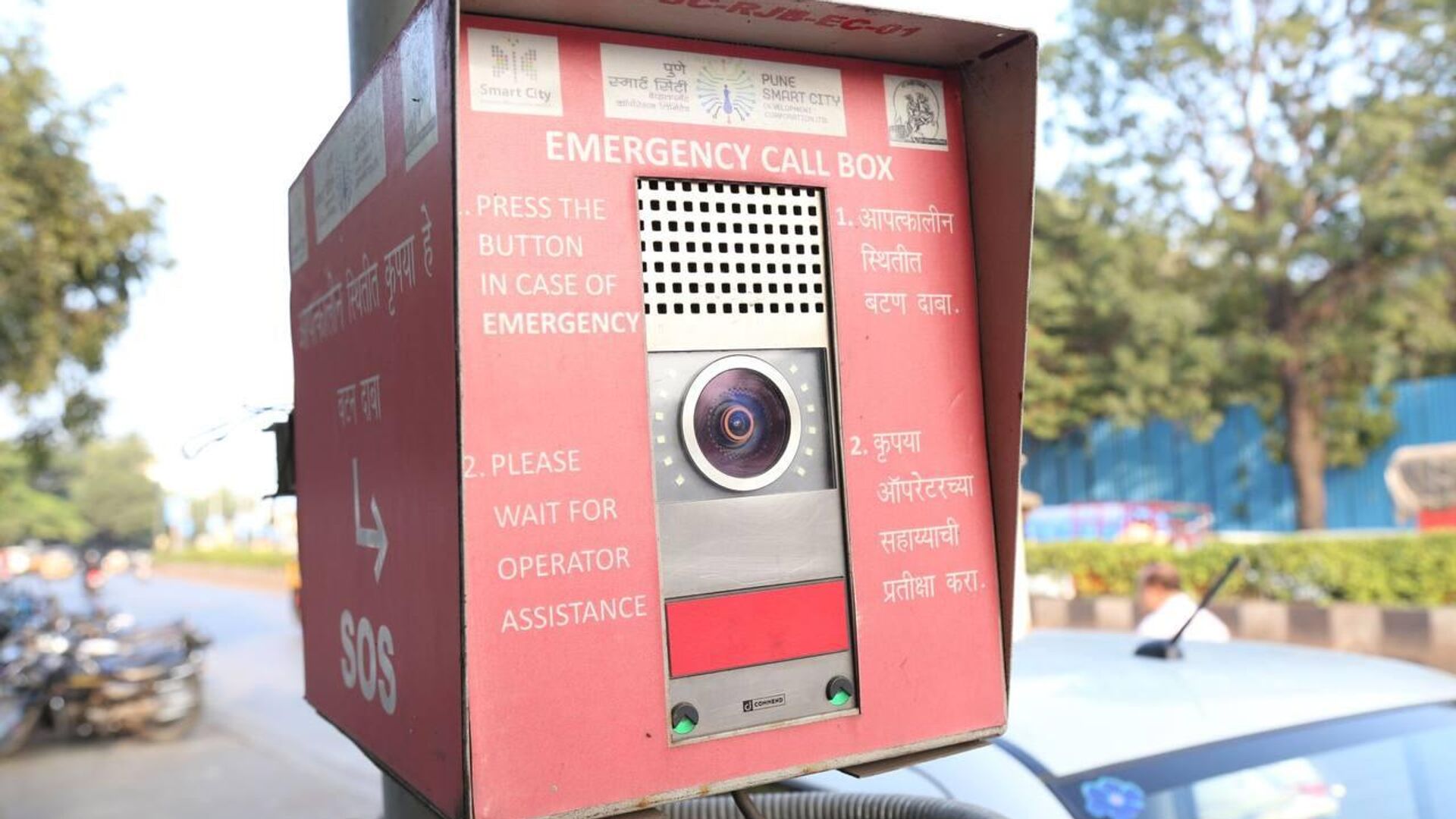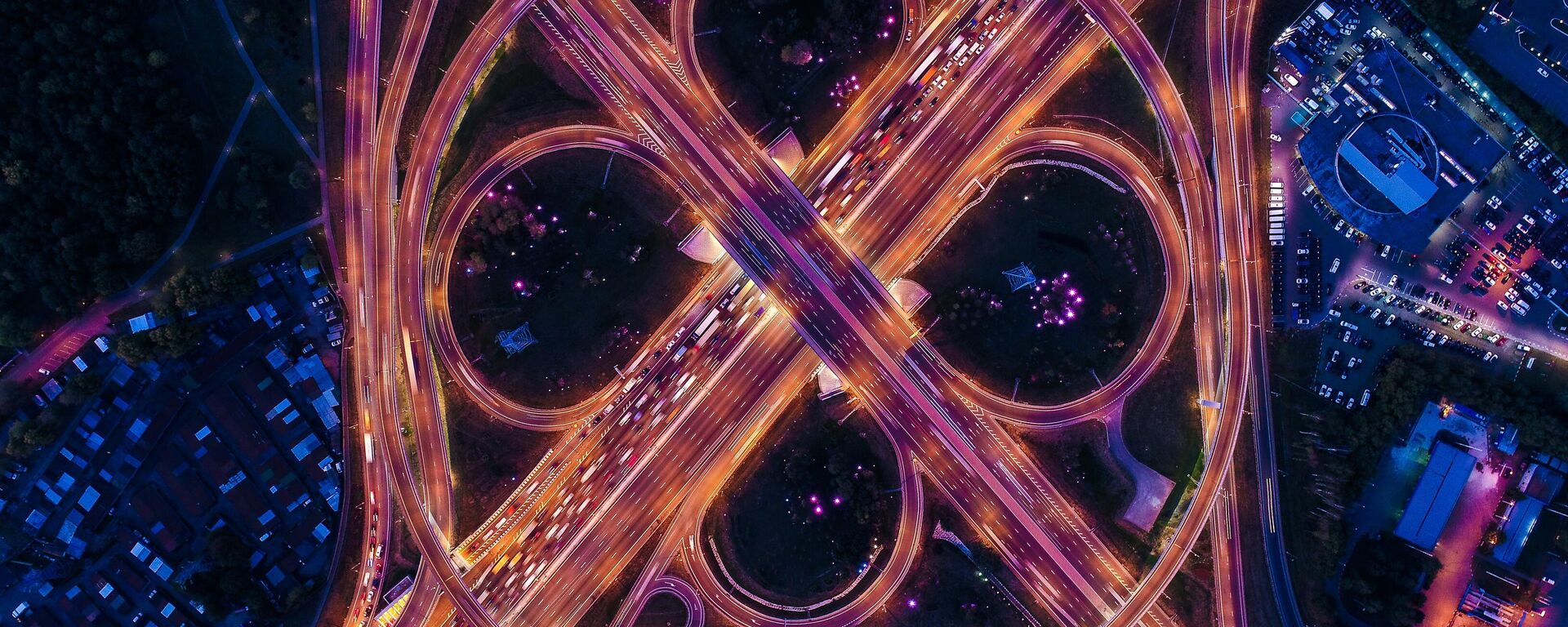https://sputniknews.in/20230407/pune-smart-city-ceo-sheds-light-on-what-future-india-may-look-like-1452338.html
Pune Smart City CEO Sheds Light on What Future India May Look Like
Pune Smart City CEO Sheds Light on What Future India May Look Like
Sputnik India
Prime Minister Narendra Modi launched Smart Cities Mission in 2015 under which 100 cities were selected for retrofitting and re-development. The flagship program of Modi aims at providing better quality of life to citizens in clean and sustainable environment.
2023-04-07T16:34+0530
2023-04-07T16:34+0530
2023-05-18T23:29+0530
india
maharashtra
smart cities
science & tech
greenhouse gas (ghg) emissions
clean energy
waste management
internet of things (iot)
it industry
science & tech
https://cdn1.img.sputniknews.in/img/07e7/04/07/1462456_0:67:1280:787_1920x0_80_0_0_6303f4d5be7c5d3f363b0eac310a4f30.jpg
Prime Minister Narendra Modi launched the Smart Cities Mission in 2015 under which 100 cities were selected for retrofitting and re-development.The flagship program aims to provide a better quality of life to citizens in a clean and sustainable environment.After the mission was launched, the deadline for completion was fixed to be June 2021. However, it was later revised to June 2023 but as per the status shared by Urban Development Ministry it seems that the mission won’t be able to meet the deadline.In an interview with Sputnik, CEO of Pune smart city Dr. Sanjay Kolte speaks about the trajectory of the mission in his city, its challenges, and how smart cities may benefit citizens.Sputnik: What changes will people see when a city will be transformed into a smart city?Kolte: Smart Cities Mission has given the vision and laid down the objectives for creating smarter cities by way of increasing the livability, resilience and sustainability. The mission aims at making a city more livable and inclusive.It takes care of the climate smart assessment framework, the guidelines on which smart cities have laid down their projects. Apart from this, on data side, data management framework was also laid down by the Federal Ministry of Urban Development. One data policy and application of the data sets has been the priority. It has also added to the technological development and finding solutions to the urban problems and challenges.Reducing Green House Gas EmissionsWhatever the projects and initiatives are taken under Smart Cities Mission, all of them aim towards net zero or reducing the GHG emission, thus reducing the carbon footprints. With an aim to reduce energy demand, energy management has been taken as a priority.Reducing Air PollutionAt the same time, it also aims to improve the air quality in the cities by reducing air pollution. In order to do so, programs like e-buses has been taken on by smart cities on a big scale. Initially, 150 e-buses were deployed and now we are upgrading it to 650 e-buses by the year's end. So, this will help in the improvement of the air quality and also the dependence on fossil fuels will be reduced to a great extent.Efficient Waste ManagementAt the same time, GHG emission is taken care of by giving impetus to solid waste management. This is being done by 100 percent collection and segregation of solid waste, efficient transportation and handling of the wastes, wet waste being processed into energy and dry waste being recycled into other products which are useful for the industry.Along with this, we are also collaborating with civil society through NGOs, like Swachch, whose volunteers have been actively working in collection and segregation of the waste. Adar Poonawalla Foundation has also been working on the clean city initiative.Internet ConnectivityA lot of work is being done on the PPP model like smart street LED lighting project which has been implemented in Pune city for 12 years and that too without any additional burden on the citizens.On the technological side, IoT devices installed in the city are providing information continuously on real-time basis to the city administration. Several state government departments and city administration departments are linked with the Integrated Command and Control Centre with their data.Sputnik: So, as a CEO of a smart city, what challenges do you face initially or in the later stage?Kolte: Engaging with all the stakeholders related to the urban development of the city administration was a big challenge initially. These stakeholders included civil societies, various associations, student welfare associations, builders' associations, architects' associations, educational institutions, research institutions, various NGOs and various other groups. So, taking care of the aspirations of all of them and making a plan for the benefit of society so as to meet the objectives and a mission laid under the Smart Cities Mission was a real challenge.Then in the mid-course, also citizen engagement for various projects remained a challenge. For example, it was difficult to engage citizens in the place-making projects which were implemented under the mission at around 18 amenity spaces. So, a lot of engagement has been done with the citizens and their aspirations, requirements and priorities were taken care of and thought of while evolving theme-based parks or creating facilities in the amenity spaces.Along with this, residents' welfare associations were continuously being consulted and involved in the campaigns like plantation and making them responsible for taking care of the plants. Participatory budgeting has been introduced by the municipal corporation by way of a mobile app. It was also good experience this year as several citizens gave suggestions on the app about the work which they want to be done in their neighborhood or in their ward areas. Their suggestions were incorporated based on the feasibility in the respective locations.In order to augment citizen engagement, we conducted various programs during Azadi ka Amritmahotsav and also engaged students from various institutions by giving them a tour of the Integrated Command and Control Centre to showcase the state of the art technology used.Sputnik: You talked about technology and technological advancement in the smart cities, but India is still at a very nascent stage in terms of adopting new technologies, for example, IoT is at the beginning stage. So, how do you see the technological penetration?Kolte: In these six to seven years of Smart Cities Mission now, I think it would not be right to say that we are in a nascent stage in terms of adopting to new technology. This is because in all the smart cities, Integrated Command and Control Centres have come up which are full of technology-oriented IoT devices and others. We intensively use technology like big data and analytics for day-to-day administration and decision-making. Geospatial technology is also used large scale for planning purposes and engaging the land usage.Big Data and analytics are used for editing systems like property assessment and property tax calculation. Efforts are also going on for linking the revenue department which deals with the title of the properties with the registration department and then the Municipal Corporation property tax department so that there is no leakage of revenue and to prevent any sort of malpractices. So, technology is extensively becoming a part of city administration.
https://sputniknews.in/20230312/22-smart-cities-in-india-to-be-ready-by-april-report-1134987.html
india
maharashtra
Sputnik India
feedback.hindi@sputniknews.com
+74956456601
MIA „Rossiya Segodnya“
2023
Rahul Trivedi
https://cdn1.img.sputniknews.in/img/07e6/0c/13/136500_0:0:628:627_100x100_80_0_0_72097ff894c7446b70d2efafcb719720.jpg
Rahul Trivedi
https://cdn1.img.sputniknews.in/img/07e6/0c/13/136500_0:0:628:627_100x100_80_0_0_72097ff894c7446b70d2efafcb719720.jpg
News
en_IN
Sputnik India
feedback.hindi@sputniknews.com
+74956456601
MIA „Rossiya Segodnya“
Sputnik India
feedback.hindi@sputniknews.com
+74956456601
MIA „Rossiya Segodnya“
Rahul Trivedi
https://cdn1.img.sputniknews.in/img/07e6/0c/13/136500_0:0:628:627_100x100_80_0_0_72097ff894c7446b70d2efafcb719720.jpg
urban development, pune, smart city, prime minister narendra modi launched smart cities mission, smart cities mission, pune smart city, urban development
urban development, pune, smart city, prime minister narendra modi launched smart cities mission, smart cities mission, pune smart city, urban development
Pune Smart City CEO Sheds Light on What Future India May Look Like
16:34 07.04.2023 (Updated: 23:29 18.05.2023) India's Ministry of Urban Development claimed in March that 22 "smart cities" will be ready by April while work in the remaining 78 will take another three to four months to complete.
Prime Minister Narendra Modi launched the Smart Cities Mission in 2015 under which 100 cities were selected for retrofitting and re-development.
The flagship program aims to provide a better quality of life to citizens in a clean and sustainable environment.
After the mission was launched, the deadline for completion was fixed to be June 2021. However, it was later revised to June 2023 but as per the status shared by Urban Development Ministry it seems that the mission won’t be able to meet the deadline.
In an interview with Sputnik, CEO of Pune smart city Dr. Sanjay Kolte speaks about the trajectory of the mission in his city, its challenges, and how smart cities may benefit citizens.
"Pune smart city has implemented its plan in all respects. Work orders worth almost INR 11,380 million ($129 million) have been given and the majority of them are towards completion. More than 40 projects have already been completed and around 13-14 projects will be completed by June 30," Kolte told Sputnik.
Sputnik: What changes will people see when a city will be transformed into a smart city?
Kolte: Smart Cities Mission has given the vision and laid down the objectives for creating smarter cities by way of increasing the livability, resilience and sustainability. The mission aims at making a city more livable and inclusive.
It takes care of the climate smart assessment framework, the guidelines on which smart cities have laid down their projects. Apart from this, on data side, data management framework was also laid down by the Federal Ministry of Urban Development. One data policy and application of the data sets has been the priority. It has also added to the technological development and finding solutions to the urban problems and challenges.
Reducing Green House Gas Emissions
Whatever the projects and initiatives are taken under Smart Cities Mission, all of them aim towards net zero or reducing the GHG emission, thus reducing the carbon footprints. With an aim to reduce energy demand, energy management has been taken as a priority.
At the same time, it also aims to improve the air quality in the cities by reducing air pollution. In order to do so, programs like e-buses has been taken on by smart cities on a big scale. Initially, 150 e-buses were deployed and now we are upgrading it to 650 e-buses by the year's end. So, this will help in the improvement of the air quality and also the dependence on fossil fuels will be reduced to a great extent.
Efficient Waste Management
At the same time, GHG emission is taken care of by giving impetus to solid waste management. This is being done by 100 percent collection and segregation of solid waste, efficient transportation and handling of the wastes, wet waste being processed into energy and dry waste being recycled into other products which are useful for the industry.
Along with this, we are also collaborating with civil society through NGOs, like Swachch, whose volunteers have been actively working in collection and segregation of the waste. Adar Poonawalla Foundation has also been working on the clean city initiative.
A lot of work is being done on the PPP model like smart street LED lighting project which has been implemented in Pune city for 12 years and that too without any additional burden on the citizens.
On the technological side, IoT devices installed in the city are providing information continuously on real-time basis to the city administration. Several state government departments and city administration departments are linked with the Integrated Command and Control Centre with their data.
Sputnik: So, as a CEO of a smart city, what challenges do you face initially or in the later stage?
Kolte: Engaging with all the stakeholders related to the urban development of the city administration was a big challenge initially. These stakeholders included civil societies, various associations, student welfare associations, builders' associations, architects' associations, educational institutions, research institutions, various NGOs and various other groups. So, taking care of the aspirations of all of them and making a plan for the benefit of society so as to meet the objectives and a mission laid under the Smart Cities Mission was a real challenge.
Then in the mid-course, also citizen engagement for various projects remained a challenge. For example, it was difficult to engage citizens in the place-making projects which were implemented under the mission at around 18 amenity spaces. So, a lot of engagement has been done with the citizens and their aspirations, requirements and priorities were taken care of and thought of while evolving theme-based parks or creating facilities in the amenity spaces.
Along with this, residents' welfare associations were continuously being consulted and involved in the campaigns like plantation and making them responsible for taking care of the plants. Participatory budgeting has been introduced by the municipal corporation by way of a mobile app. It was also good experience this year as several citizens gave suggestions on the app about the work which they want to be done in their neighborhood or in their ward areas. Their suggestions were incorporated based on the feasibility in the respective locations.
In order to augment citizen engagement, we conducted various programs during Azadi ka Amritmahotsav and also engaged students from various institutions by giving them a tour of the Integrated Command and Control Centre to showcase the state of the art technology used.
Sputnik: You talked about technology and technological advancement in the smart cities, but India is still at a very nascent stage in terms of adopting new technologies, for example, IoT is at the beginning stage. So, how do you see the technological penetration?
Kolte: In these six to seven years of Smart Cities Mission now, I think it would not be right to say that we are in a nascent stage in terms of adopting to new technology. This is because in all the smart cities, Integrated Command and Control Centres have come up which are full of technology-oriented IoT devices and others. We intensively use technology like big data and analytics for day-to-day administration and decision-making. Geospatial technology is also used large scale for planning purposes and engaging the land usage.
Big Data and analytics are used for editing systems like property assessment and property tax calculation. Efforts are also going on for linking the revenue department which deals with the title of the properties with the registration department and then the Municipal Corporation property tax department so that there is no leakage of revenue and to prevent any sort of malpractices. So, technology is extensively becoming a part of city administration.



